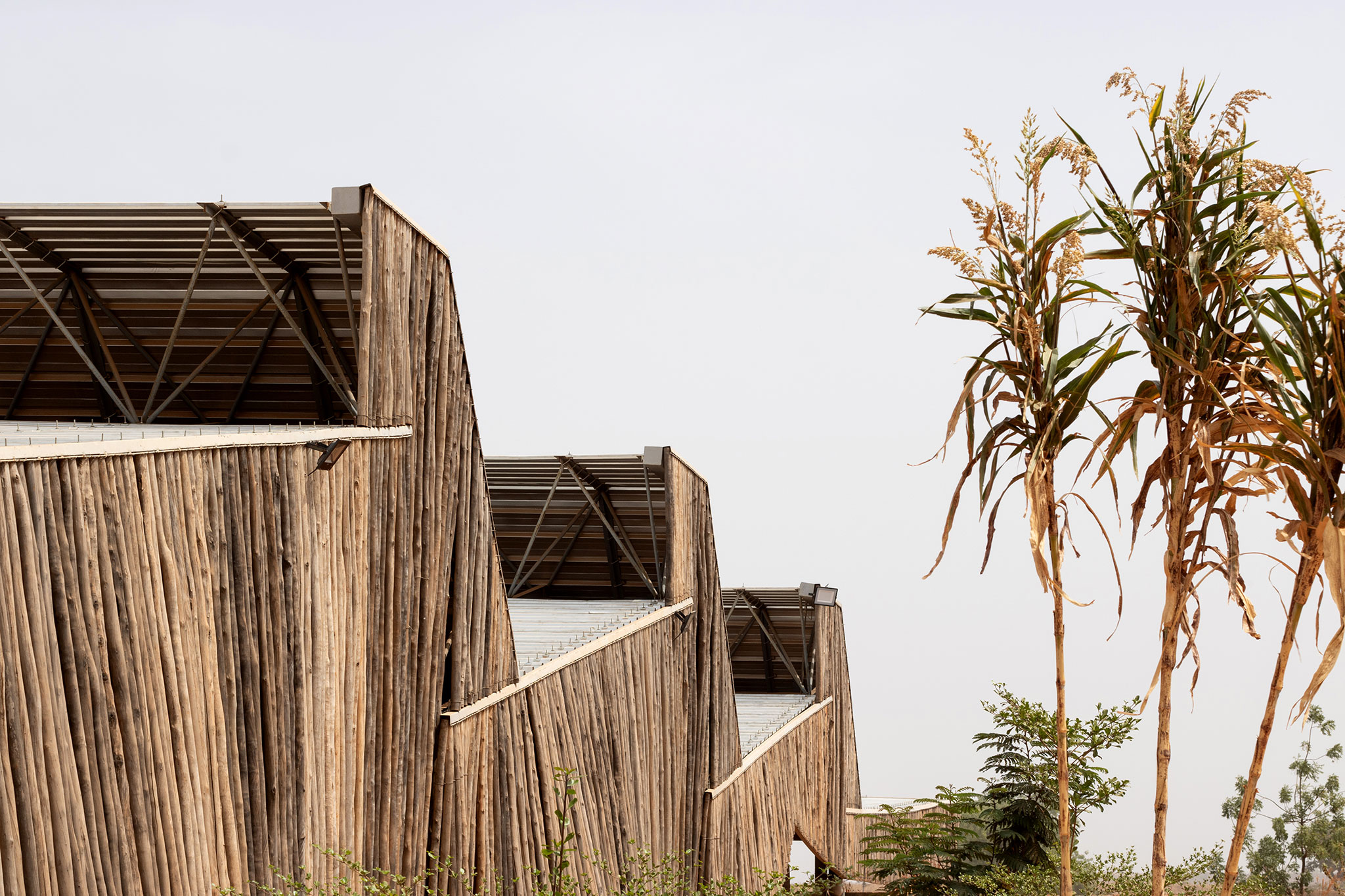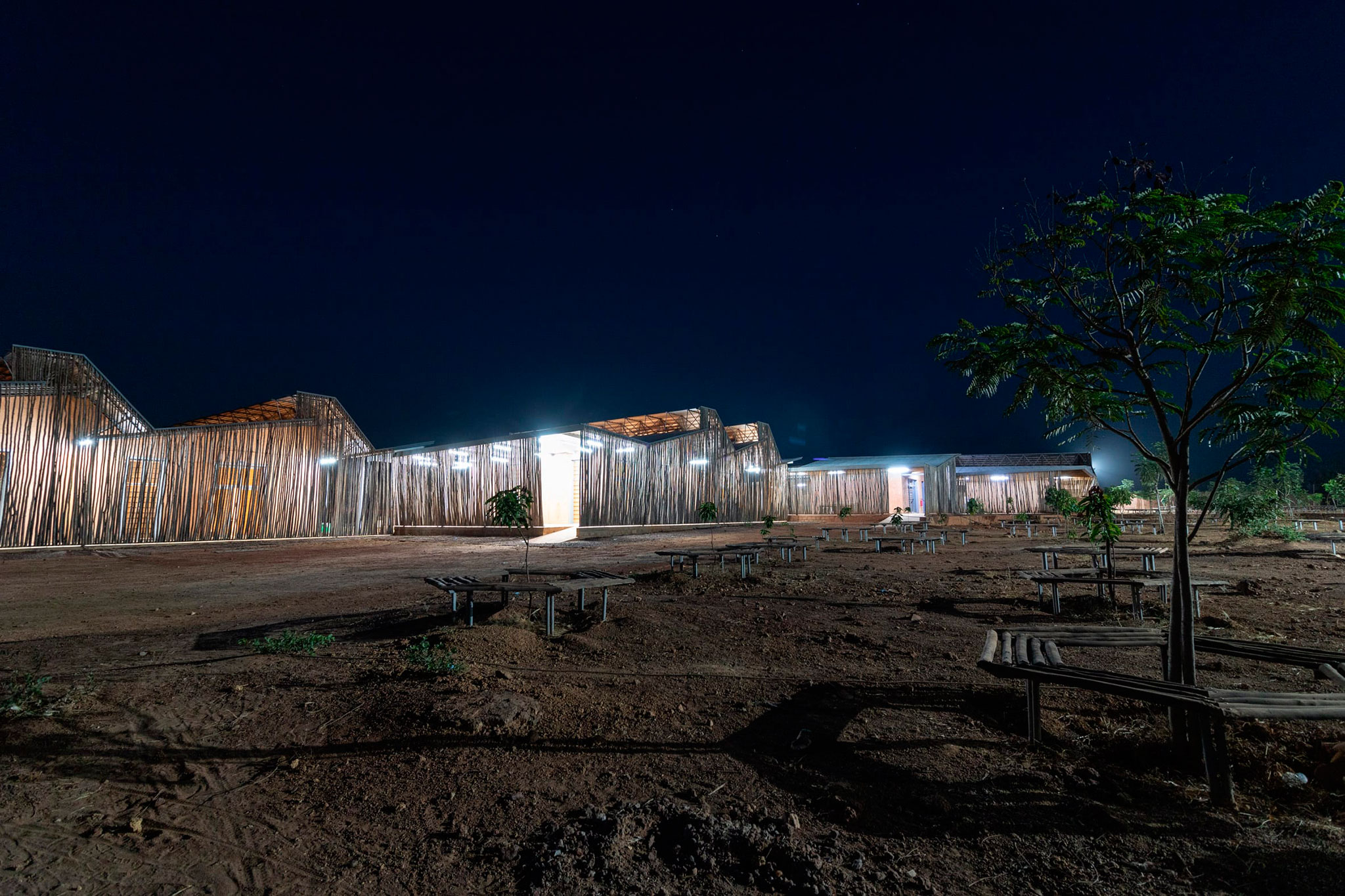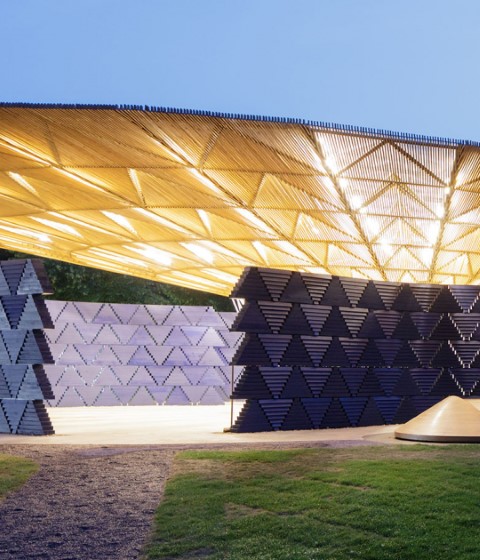The 2,100-square-meter building is composed of a series of repeated modules that contain classrooms, lecture halls and auxiliary spaces.
The modules are placed in a staggered formation to facilitate airflow in and around the building. Those that contain the classrooms are arranged around a rectangular courtyard at their centre.

Ventilation diagram. Burkina Institute of Technology by Kéré Architecture.
The complex has an environment with 2,000 seedling trees (to insist on the preservation of local flora), planted by students, to generate an environment that is committed to climate change, as well as a rainwater catchment basin, a well and the photovoltaic of the university ensure that the campus is self-sufficient.
Kéré chose exposed concrete coloured with local clay for the walls, implying a transfer of knowledge, mixture with his knowledge of traditional building materials and techniques, using for other walls screens of eucalyptus wood (an Australian import that is displacing native tree species), each 10 centimetres thick, that in the case of the BIT are a kind of brise-soleil, joining the individual buildings together to form approximately a community of element.

Burkina Institute of Technology by Kéré Architecture. Photograph by Jaime Herraiz

Burkina Institute of Technology by Kéré Architecture. Photograph by Jaime Herraiz
Project description by Kéré Architecture
After a successful collaboration with Kéré Architecture on the construction of the Lycée Schorge, the Stern Stewart Institute decided to expand its campus with the commission of a new facility that would allow high school graduates to continue their education.
The Burkina Institute of Technology is designed using a system of repeated modules, housing classrooms and auxiliary functions, arranged orthogonally to define a rectangular courtyard. The orthogonal arrangement of modules allows the campus to expand incrementally according to its needs. The modules are staggered, allowing air to flow through the central void, creating a cool space where students can relax and interact.
Building on the experience acquired at the Naaba Belem Goumma Secondary School, the walls are made of poured local clay, cast in-situ. This innovative method meant construction could be completed within a tight timeframe, using large formworks that allowed an entire module to be poured in one session. Although the classrooms need mechanical air conditioning because of the IT equipment, the massive clay walls contribute significantly to cooling down the interior spaces.
The repetitive roof profiles create a dynamic rhythm and form a chimney at the back of each module where built-up warm air can be released. Hung ceilings, made of local eucalyptus wood, brighten the interior spaces and complement the smooth clay walls.
To create a sense of unity with the rest of the campus, the buildings are clad in a transparent skin of eucalyptus wood to match the Lycée Schorge.
Located on a flood plain, the project included extensive landscaping work to protect the buildings. During the rainy season, water is channelled into a large underground tank that is later used to irrigate the extensive mango plantations on the campus.


















































